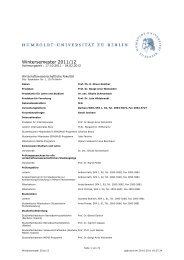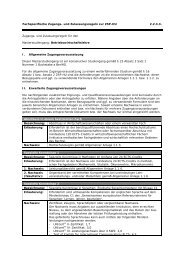Measuring the Effects of a Shock to Monetary Policy - Humboldt ...
Measuring the Effects of a Shock to Monetary Policy - Humboldt ...
Measuring the Effects of a Shock to Monetary Policy - Humboldt ...
Create successful ePaper yourself
Turn your PDF publications into a flip-book with our unique Google optimized e-Paper software.
Bayesian FAVARs with Agnostic Identification 33<br />
6 Structural FAVARs<br />
6.1 Identification <strong>of</strong> <strong>Shock</strong>s<br />
The issue <strong>of</strong> identifying structural shocks from <strong>the</strong> reduced form VAR innovations, and<br />
in particular identifying a shock <strong>to</strong> monetary policy has been dealt with in a huge body<br />
<strong>of</strong> literature. There have been introduced a lot <strong>of</strong> variations on how <strong>to</strong> achieve identifica-<br />
tion. The most prominent ones are explained below. As <strong>the</strong>re are various approaches <strong>to</strong><br />
deal with <strong>the</strong> same question it seems clear that <strong>the</strong>re is also a controversial debate about<br />
which scheme <strong>to</strong> choose in order <strong>to</strong> reveal <strong>the</strong> true propagation mechanism attributable<br />
<strong>to</strong> a monetary policy shock. After considering <strong>the</strong> different approaches available, it seems<br />
<strong>to</strong> for me <strong>to</strong> be advisable <strong>to</strong> head <strong>the</strong> challenge <strong>of</strong> identification through applying <strong>the</strong><br />
agnostic identification using sign restrictions 32 . Especially from <strong>the</strong> perspective <strong>of</strong> an<br />
economist it seems <strong>to</strong> me plausible <strong>to</strong> have an identification scheme that incorporates<br />
economic <strong>the</strong>ory and through imposing <strong>the</strong> impulse responses <strong>to</strong> satisfy <strong>the</strong> conventional<br />
wisdom. Although this is a weaker identification scheme 33 . In this section <strong>the</strong> well known<br />
identification schemes are presented, afterwards I show briefly how <strong>the</strong>y were extended <strong>to</strong><br />
be applicable <strong>to</strong> large scale DFMs and <strong>to</strong> <strong>the</strong> FAVAR framework. And finally in <strong>the</strong> last<br />
part <strong>of</strong> this section I elaborate on <strong>the</strong> extension <strong>of</strong> <strong>the</strong> sign restriction <strong>of</strong> Uhlig (2005) <strong>to</strong><br />
<strong>the</strong> FAVAR framework that incorporates <strong>the</strong> Gibbs sampling.<br />
In <strong>the</strong> common VAR framework one is required <strong>to</strong> deduce <strong>the</strong> structural shocks for<br />
<strong>the</strong> VAR innovations. In <strong>the</strong> DFM and FAVAR framework <strong>the</strong> task is actually <strong>the</strong> same<br />
with <strong>the</strong> main distinction that <strong>the</strong> structural shocks are not required <strong>to</strong> be deduced from<br />
<strong>the</strong> reduced form VAR innovation, but from <strong>the</strong> FAVAR innovation, including <strong>the</strong> fac<strong>to</strong>rs<br />
that drive <strong>the</strong> dynamics <strong>of</strong> <strong>the</strong> informational variables or <strong>the</strong> observed data.<br />
32 Agnostic because no restriction on output.<br />
33 weaker in a sense that only restriction is on <strong>the</strong> mentioned variables according <strong>to</strong> <strong>the</strong> conventional<br />
wisdom. The aim is <strong>to</strong> restrict as little as necessary a priori.


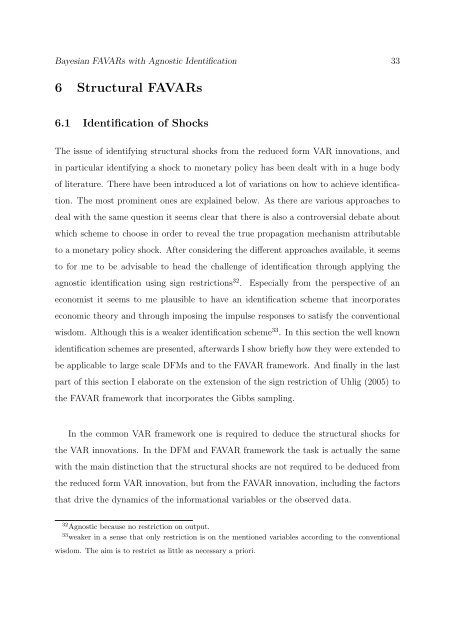
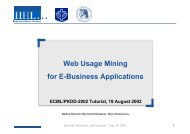
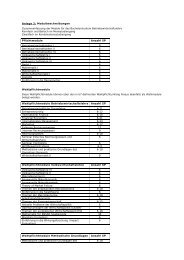

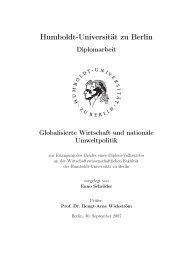
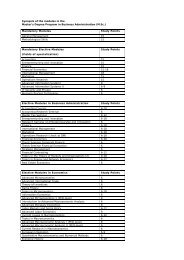
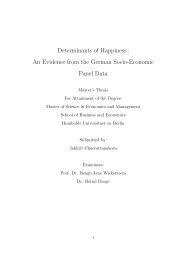
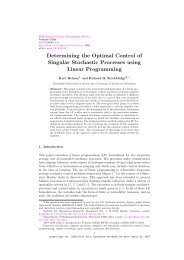
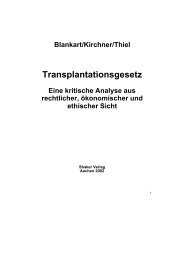
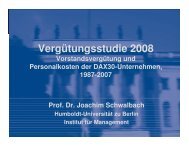

![[Text eingeben] [Text eingeben] Lebenslauf Anna-Maria Schneider](https://img.yumpu.com/16300391/1/184x260/text-eingeben-text-eingeben-lebenslauf-anna-maria-schneider.jpg?quality=85)

